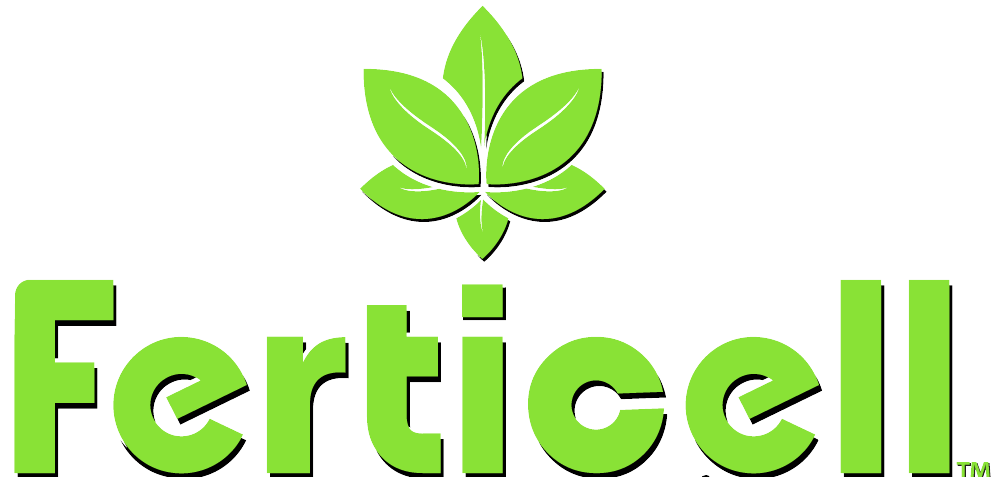Better Together
Better Together: How Ferticell® + Conventional Fertilizers Deliver Higher ROI and Crop Performance
In today’s agricultural economy, the pressure to reduce input costs while maintaining or increasing yields is greater than ever. Many growers rely heavily on conventional fertilizers to meet crop nutrient demands, yet challenges such as leaching, salt buildup, poor nutrient efficiency, and soil degradation persist. Integrating Ferticell® products alongside conventional fertilizers offers a cost-effective, performance-enhancing solution that strengthens both short-term results and long-term soil health.
The Problem with “More” Fertilizer
Traditional NPK inputs can be effective, but they often require high volumes to achieve desired results, especially in degraded or biologically inactive soils. However, not all of this fertilizer ends up in the crop. Losses due to volatilization, leaching, immobilization, and chemical antagonism are common, reducing nutrient-use efficiency (NUE) and inflating cost per unit of yield.
Moreover, repeated application of high-salt fertilizers contributes to:
- Compacted, poorly structured soils
- Reduced microbial activity
- Increased irrigation needs
- Yield drag from nutrient lock-out and osmotic stress
Ferticell®: A Biological Boost to Efficiency Ferticell products, derived from clean, plant-based sources, enhance the effectiveness of conventional fertilizers by improving uptake, mobilizing locked-up nutrients, and reducing environmental stress. These biologically active inputs, including freshwater algae, amino acids, and organic acids, act as carriers, penetrants, and chelators to move nutrients into the plant faster and more completely.
When used in combination with synthetic fertilizers, Ferticell products:
- Improve NUE by increasing foliar and root absorption
- Reduce salt stress by displacing or neutralizing harmful ions
- Activate soil microbes to enhance nutrient cycling
- Decrease fertilizer waste by stabilizing nutrients in plant-available forms
Examples of Strategic Integration
- Explorer™ 16-0-0 and Explorer™ 10-0-0 (amino acid nitrogen) applied with UAN or ammonium sulfate can reduce burn risk, improve nitrogen retention, and stimulate protein synthesis for enhanced vegetative growth.
- Universal™ 0-0-1 enhances foliar sprays of conventional micronutrients and NPKs, improving uptake through better leaf penetration and acting as a bio- carrier that reduces phytotoxicity.
- ProCal™ 3-0-0 boosts calcium delivery in standard NPK programs without the risk of precipitation or tie-up and reinforces tissue integrity during fruit development.
- Pro Primer™ 2-0-0 increases carbon availability and chelates tied-up nutrients in the soil, amplifying the performance of granular fertilizers while feeding microbial life.
- Nutri-Plus™ 2.5-0-0 provides amino acid support under stress conditions, helping maintain plant metabolism and reducing yield loss from heat, drought, or salinity when conventional fertility becomes less effective.
- Active™ Series (e.g., 5-10-10, 2-20-2) offers stage-specific blends that align with vegetative or reproductive phases and can substitute or supplement conventional liquid starters with biologically-enhanced forms.
- Pro K™ 0-0-20 delivers potassium in a plant-extract form that is chloride-free, compatible with most fertilizers, and improves sugar movement, water regulation, and fruit quality beyond what muriate or sulfate of potash alone can do.
Case Study: Corn and Soybeans
Growers using 10-15% lower rates of conventional NPK fertilizers alongside Ferticell additives report equal or improved yields. By supplementing early-season fertility with ProCal and Explorer, and boosting reproductive support with Universal, Pro K, or PK 0-20-20, they saw:
- Reduced lodging
- Faster early vegetative growth
- Improved stand uniformity
- Higher pod/ear counts and kernel fill
Return on Investment (ROI) Analysis Ferticell inputs are highly concentrated and typically applied at lower rates (1–2 quarts/acre). While the per-gallon cost may be higher than bulk fertilizers, the targeted impact on crop metabolism and nutrient uptake more than offsets the investment. In many cases, growers report:
- 10–20% reduction in total fertilizer costs
- Higher-quality harvests with fewer physiological defects
- Improved ROI due to better crop uniformity and storability
Better Yields, Healthier Soil
Blending Ferticell inputs with conventional fertilizers enables growers to maintain high-yielding systems while reducing the negative agronomic and environmental impacts of salt-heavy regimes. Over time, this integrated approach helps improve:
- Soil structure and tilth
- Organic matter retention
- Microbial biodiversity
- Long-term productivity
Conclusion
Using Ferticell in combination with conventional fertilizers is not about replacement—it’s about amplification. By making every nutrient more available, more efficient, and less wasteful, Ferticell products help growers get more out of what they already use. The result is a more sustainable, cost-effective fertility program that pays off in stronger plants, better soil, and a healthier bottom line.



